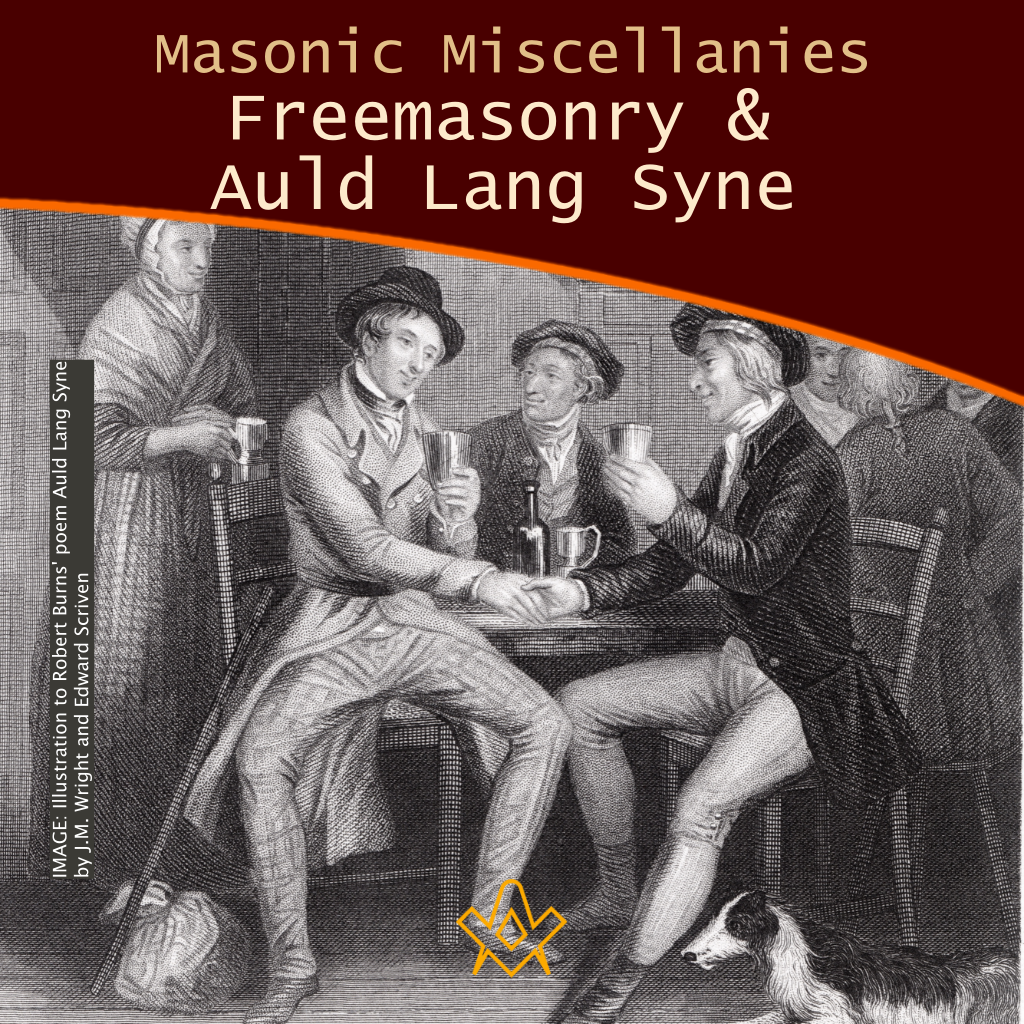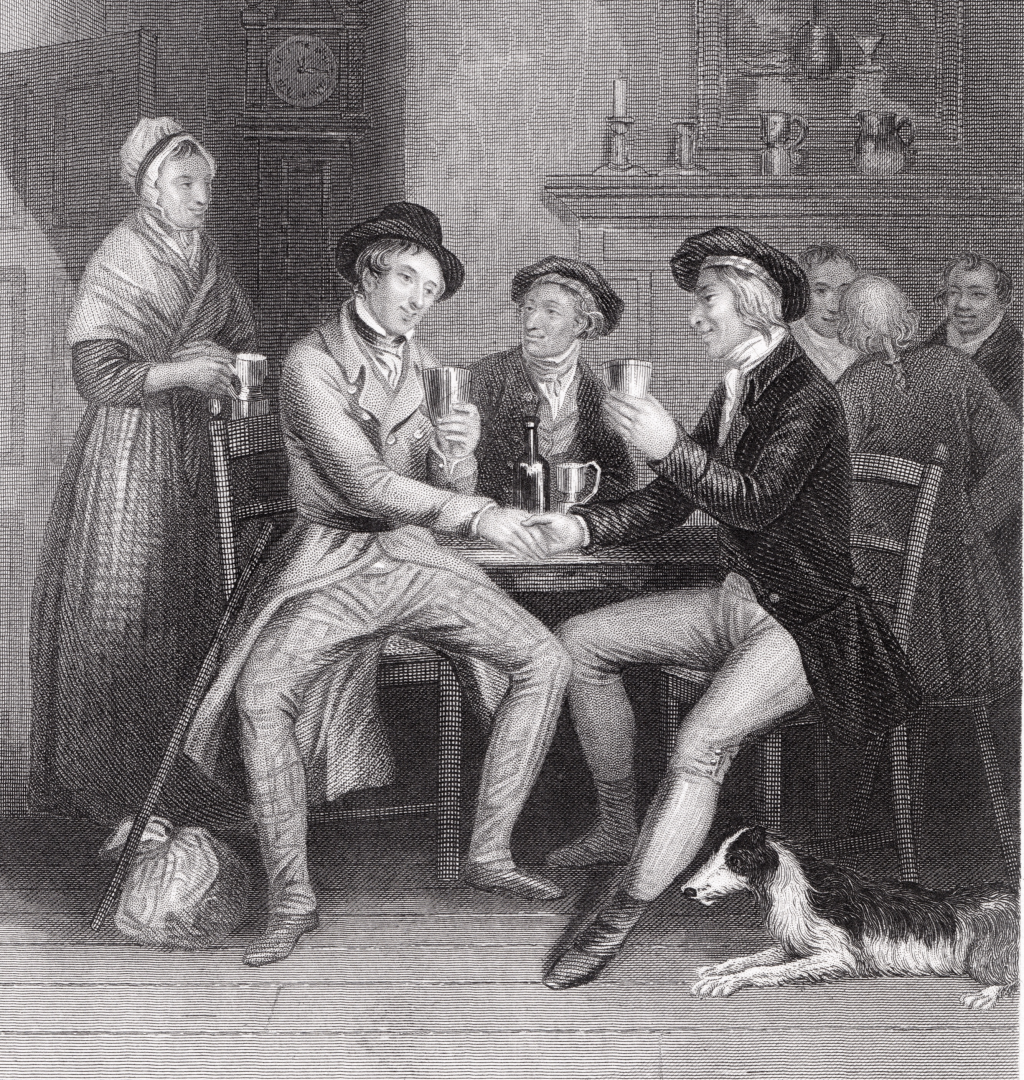
Illustration to Robert Burns’ poem Auld Lang Syne by J.M. Wright and Edward Scriven. The Complete Works of Robert Burns: Containing the Poems, Songs, and Correspondence. Illustrated By W.H. Bartlett, T. Allom, and Other Artists. With a New Life of the Poet, and Notices, Critical and Biographical
IMAGE LINKED: wikimedia Attribution 4.0 International (CC BY 4.0)
Burns’ Original Scots Verse
Should auld acquaintance be forgot,
and never brought to mind?
Should auld acquaintance be forgot,
and auld lang syne?[a]
Chorus:
For auld lang syne, my jo,
for auld lang syne,
we’ll tak’ a cup o’ kindness yet,
for auld lang syne.
And surely ye’ll be your pint-stoup!
and surely I’ll be mine!
And we’ll tak’ a cup o’ kindness yet,
for auld lang syne.
Chorus
We twa hae run about the braes,
and pou’d the gowans fine;
But we’ve wander’d mony a weary fit,
sin’ auld lang syne.
Chorus
We twa hae paidl’d in the burn,
frae morning sun till dine;[b]
But seas between us braid hae roar’d
sin’ auld lang syne.
Chorus
And there’s a hand, my trusty fiere!
and gie’s a hand o’ thine!
And we’ll tak’ a right gude-willie waught,
for auld lang syne.
Chorus
English Sung Version
Should old acquaintance be forgot,
and never brought to mind?
Should old acquaintance be forgot,
and auld lang syne?
Chorus
For auld lang syne, my dear,
for auld lang syne,
we’ll take a cup of kindness yet,
for auld lang syne.
And surely you’ll buy your pint cup!
and surely I’ll buy mine!
And we’ll take a cup o’ kindness yet,
for auld lang syne.
Chorus
We two have run about the hills,
and picked the daisies fine;
But we’ve wandered many a weary foot,
since auld lang syne.
Chorus
We two have paddled in the stream,
from morning sun till dine;
But seas between us broad have roared
since auld lang syne.
Chorus
And there’s a hand my trusty friend!
And give me a hand o’ thine!
And we’ll take a right good-will draught,
for auld lang syne.
Chorus
AULD LANG SYNE and Freemasonry
This dismissory song now used throughout the English-speaking world. In Scotland, it gradually displaced the century-old ‘Good-night and joy be wi’ you a’.’
In spite of the popularity of ‘Auld Lang Syne’, it has aptly been described as ‘the song that nobody knows’.
Even in Scotland, hardly a gathering sings it correctly, without some members of the party introducing the spurious line: ‘We’ll meet again some ither nicht’ for the line which Burns actually wrote: ‘And we’ll tak’ a cup o’ kindness yet’.
To say nothing of adding ‘the days of’ to the line ‘For auld lang syne’!
Source: – The Burns Encyclopedia (1959)
On 31 December millions of people throughout the English-speaking world will clasp hands and sing ‘Auld Lang Syne’ on the stroke of midnight.
This seemingly age-old song is traditionally sung as we see out the Old Year, but few know the words past the first verse and chorus, and even fewer know what those words mean or where they originated.
Furthermore, various additions and adaptions have crept in such as adding ‘for the sake of’ to the last line of the verses.
The title may translate from the Scots to English as ‘old time since’, ‘old times past’ – ‘for auld lang syne’ loosely translates as ‘for the sake of old times’.
It is in essence a song of old friends, the reminiscences of time past, and raising a glass in the hope we will meet again.
Not only an anthem of the passing of the Old Year to the New, it is also sung at weddings, funerals, graduations, the election of a new government, and as a farewell, or closing to other occasions, such as the last lowering of the Union Jack as a British colony achieves independence.
The military use it for Passing-Out Parades, and the Scouting movement often use it to close their jamborees and other functions.
The words are primarily attributed to the Scottish poet Robert Burns. As was common at the time, words from old legends, songs and poems were modified or ‘recycled’ by writers and poets and it is known that Burns appropriated some of the text, for he sent a copy of the song to the Scots Musical Museum in 1788 with the remark, ‘The following song, an old song, of the olden times, and which has never been in print, nor even in manuscript until I took it down from an old man.’
The ballad ‘Old Long Syne'(1711) by James Watson, shows considerable similarity in both the first verse and chorus, to Burns’ later poem.
The well-known tune we are accustomed to is believed to have derived from a Scottish dance: “The Burns Encyclopedia” (1959) states:
The tune to which it was matched in the Museum first appeared in Playford’s Original Scotch Tunes, 1700, though doubtless it was then at least half a century old, for it was the tune to which the antecedents of Burns’s poem were written.
The ‘exceedingly expressive’ germphrase has been traced back to an anonymous ballad in the Bannatyne Manuscript of 1568, ‘Auld Kyndnes foryett’. The last of the eight stanzas goes:
“They wald me hals with hude and hatt,
Quhyle I wes rich and had anewch,
About me friends anew I gatt,
Rycht blythlie on me they lewch;
But now they mak it wondir tewch,
And lattis me stand befoir the yett;
Thairfoir this warld is very frewch,
And auld kyndnes is quyt foryett.”
From that anonymous old poet’s complaint of man’s ingratitude, we move on to a slightly later ballad, probably by the courtly poet Sir Robert Ayton (1570-1638) who accompanied James VI and I to England, though sometimes attributed on little evidence to Francis Sempill of Beltrees (d. 1683?).
First published in Watson’s Choice Collection of Scots Poems, 1711, the anthology upon which the whole of the 18th Century Scots Revival was based, Ayton’s poem begins:
“Should auld acquaintance be forgot,
And never thought upon,
The flames of love extinguished,
And freely past and gone?
Is thy kind heart now grown so cold
In that loving breast of thine,
That thou canst never once reflect
On old-long-syne?
Source:– The Burns Encyclopedia (1959)
The Link to Freemasonry
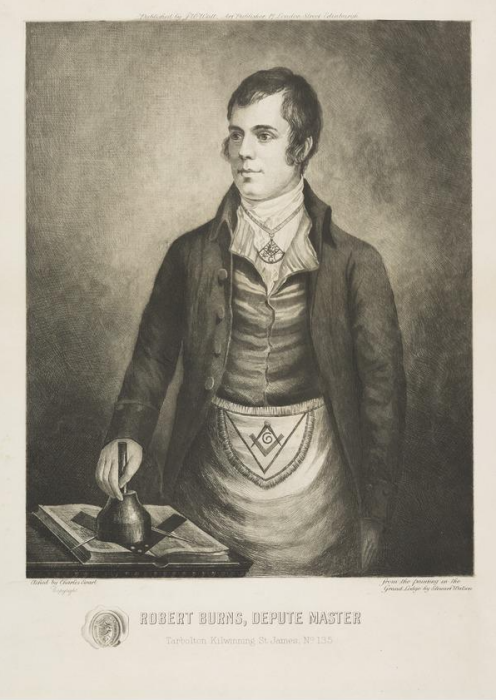
Robert Burns, Depute Master Tarbolton Kilwinning St James No. 135. National Galleries Scotland. Creative Commons CC by NC
IMAGE LINKED: wikimedia Attribution 4.0 International (CC BY 4.0)
As many Freemasons are already aware, Robert Burns (1759-1796) became a Freemason at the age of 22, initiated into Lodge St David, Tarbolton, on 4 July 1781.
The Craft evidently had a significant influence on his work.
The conviviality and camaraderie he experienced in lodge no doubt contributed to his version of Auld Lang Syne – brotherly love being the underlying sentiment.
The Masonic ‘Chain of Union’ and Auld Lang Syne
The link to the singing of Auld Lang Syne and Freemasonry was reported in The Scotsman in 2021. Musicologist Morag Grant researched the connection in her book ‘Auld Lang Syne: A Song And Its Culture’ (2021):
University of Edinburgh musicologist Morag Grant – who has published a book about the song – spotted the Masonic link while sifting through the archives of Glasgow’s Mitchell Library.
A newspaper report of an Ayrshire lodge’s Burns Supper in 1879 describes the song being sung as members formed “the circle of unity” – a common Masonic ritual also called the “chain of union”.
Source:– The Scotsman, 2021
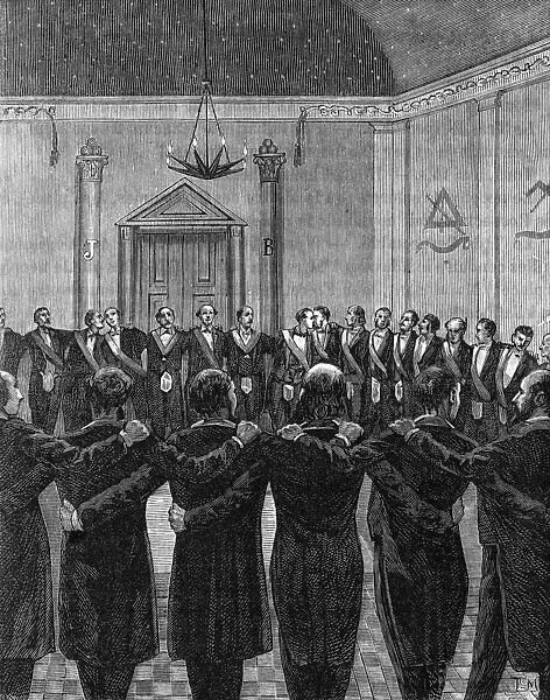
chain of union
IMAGE LINKED: wikimedia Attribution 4.0 International (CC BY 4.0)
At Hogmanay in Scotland, it is common practice that everyone joins hands with the person next to them to form a great circle around the dance floor.
At the beginning of the last verse (And there’s a hand, my trusty fiere!/and gie’s a hand o’ thine!), everyone crosses their arms across their breast, so that the right hand reaches out to the neighbour on the left and vice versa.
When the tune ends, everyone rushes to the middle, while still holding hands.
When the circle is re-established, everyone turns under the arms to end up facing outwards with hands still joined.
The tradition of singing the song when parting, with crossed hands linked, is thought to have arisen in the mid-19th century among Freemasons and other fraternal organisations.
The Masonic routine is to form a circle in which everyone is equidistant from the centre, hands by their sides, symbolising they are relative strangers and demonstrating they are all equal.
The Chain of Union is associated with the Closing Charge.
Source:- Wikipedia
Wherever you are in the world, when you sing ‘Auld Lang Syne’ – also think of the Tyler’s Toast.
Raise a glass and physically (or symbolically) link arms in remembrance of ‘old times past’, old friends, brethren – and the hope of meeting again:
Then to our final Toast tonight, our glasses freely drain,
Happy to meet, sorry to part, happy to meet again.The Mason’s social Brotherhood around the festive board,
Reveals a Truth more precious far, than the miser’s hoard.
We freely share the bounteous gifts, that generous hearts contain,
Happy to meet, sorry to part, happy to meet again.We meet as Masons free and true, and when our work is done,
The merry song and social glass is not unduly won.
And only at our farewell pledge is pleasure mixed with pain,
Happy to meet, sorry to part, happy to meet again.Amidst our mirth we drink to all poor Masons o’er the Earth,
On every shore our flag of love is gloriously unfurled.
We prize each Brother, fair or dark, who bears no moral stain,
Happy to meet, sorry to part, happy to meet again.We Masons prize that noble truth, the Scottish peasant told,
That rank is but a guinea stamp: The man himself the gold.
We meet the rich and poor alike, the equal rights maintain,
Happy to meet, sorry to part, happy to meet again.Dear Brethren of the Mystic tie, the night is waning fast,
Our work is done, our feast is o’er, this toast must be the last.
Good night to all, once more good night, again that farewell strain,
Happy to meet, sorry to part, happy to meet again.
See also – ‘The Chain of Union’ article in this issue.
Footnotes
References
Lindsay, Maurice (December 1996) [1959]. “Auld Lang Syne”. The Burns Encyclopedia (New Third ed.). Robert Hale Ltd. ISBN 0-7090-5719-9. http://www.robertburns.org
Wikipedia contributors. (2022, December 17). Auld Lang Syne. In Wikipedia, The Free Encyclopedia. Retrieved 16:43, December 18, 2022, from https://en.wikipedia.org/w/index.php?title=Auld_Lang_Syne&oldid=1127943880
Paterson, Laura – ‘Freemasonry behind Auld Lang Syne arm linking at new year’, The Scotsman, 31/10/2021 https://www.scotsman.com/news/people/freemasonry-behind-auld-lang-syne-arm-linking-at-new-year-3510868 accessed 18/12/2022

The Burns Encyclopedia
By: Maurice Lindsay
Robert Burns wrote songs, satires, and verse-letters along with the luminous poetry which has delighted readers for more than 200 years.
Since the first edition of this encyclopedic guide to his life and work was published in 1959 it has been regarded as the definitive guide to an important literary figure.
This third revised and updated edition includes the latest scholarship about the poet and his work and fills in details of little-known characters in the Burns story.
Includes illustrations from period paintings and etchings that bring the people and places of Robert Burns’ Scotland to vibrant life.
Recent Articles: Masonic Miscellanies
 Masonic Miscellanies - The Amulet of the Ladder Explore the cosmic significance of the Ladder in ancient Egyptian mythology through Wallis Budge's "Egyptian Magic." Discover how this profound symbol bridges the mortal and divine, encapsulating the Egyptians' fervent afterlife aspirations with a blend of myth, magic, and material culture. Dive into the celestial ascent of Osiris and mortal souls. |
 Masonic Miscellanies - Adulterine Gilds Guilds, the associations that shaped medieval European society, were more than just organizations of artisans and merchants. They played a vital role in the economic and social development of towns and cities. This exploration delves into the intriguing concept of adulterine gilds and their interconnectedness with guilds, offering insight into the significance of legal authorization and recognition in medieval Europe. |
 Masonic Miscellanies - Masonic Orb Discover the fascinating world of Masonic ball watch fobs, intricately crafted with tiny pyramids that form a cross when opened. These decorative accessories were all the rage in the late 1800s and early 1900s, and they still hold a certain allure today. Explore the different varieties and symbols found on these unique pieces that carry deep Masonic meaning. |
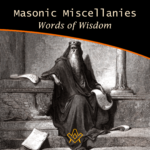 Masonic Miscellanies – Words of Wisdom Uncover timeless wisdom from King Solomon to Albert Pike in our latest Masonic Miscellanies, a treasure trove of insights for Masons. Journey through the ages and glean inspiring sayings, reflecting on their profound influence on Masonic principles. An enriching read for the enlightened. |
 Masonic Miscellanies - Symbolism of the Right Hand Unlock the enigmatic realm of Freemasonry as we delve into its age-old symbols, rituals, and philosophies. This thought-provoking exploration, drawn from Mackey's Revised Encyclopedia of Freemasonry, focuses on the iconic 'right hand' symbol - its rich history, universality, and profound significance. |
 Masonic Miscellanies - Order of the Secret Monitor Unveil the mystery of Freemasonry with 'The Order of the Secret Monitor'. Discover this lesser-known appendant order, its unique rituals, and the profound teachings it offers. Explore the bonds of friendship and brotherhood it fosters, all wrapped in an intriguing cloak of mystery. Your journey into the depths of Masonic wisdom begins here. |
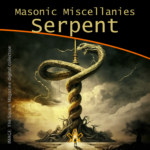 Masonic Miscellanies - The Symbol of the Serpent As a symbol, the serpent obtained a prominent place in all the ancient initiations and religions. |
 Masonic Miscellanies - The Four Veils in Royal Arch Masonry What are the four veils in Royal Arch Masonry? And what is the 'Ceremony of Passing the Veils'? Although common throughout Scotland, Ireland and the United States, it is mostly unknown in England, presently only worked in the Province of Bristol. ( and by dispensation ) |
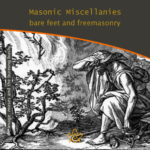 Masonic Miscellanies - Bare feet and Freemasonry A candidate for initiation into a Masonic Lodge often finds the requirements which he/she must fulfil somewhat odd. The mode of preparation often remains a puzzle, since the ritualistic explanation is not offered in full. Why are we 'slipshod' or "bare-footed" in Masonic Ritual? |
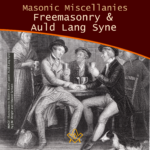 Masonic Miscellanies – Freemasonry and Auld Lang Syne Millions of people throughout the world will sing Auld Lang Syne to see out the Old Year. Few will know all the words, fewer still know what they mean, or that there is a link to Freemasonry. |
 Masonic Miscellanies - The Mosaic Pavement - why mosaic, why pavement? We are all familiar with the black and white chequered flooring of the Masonic lodge but where did it originate? There are a few theories… |
 Masonic Miscellanies – Masonic Master's Carpets Have you got a magic "Masonic Master's Carpet" in your lodge? I say 'magic' with my tongue firmly in my cheek because (as far as I know) these fabulous works of art don't bestow any mystical powers but can bestow some educational ones! However, considering their possible value today, they may magic up some interest (or funds). |
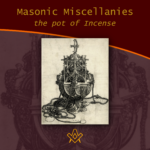 Masonic Miscellanies – The Pot of Incense Just when the pot of incense became an emblem of the third section of the Sublime Degree can not be stated with certainty. It is, apparently, an American invention or addition. But what does it symbolise? |
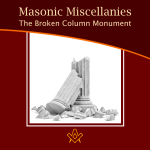 Masonic Miscellanies - The Broken Column Monument The story of the broken column was first illustrated by Amos Doolittle in the "True Masonic Chart" by Jeremy Cross, published in 1819. |
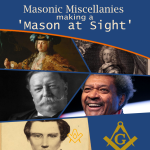 Masonic Miscellanies - Making a 'Mason at Sight' What does it mean to make a 'Mason at sight', and who was made one? |
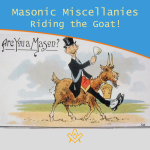 Masonic Miscellanies - Riding the Goat! Many Freemasons will have come across the phrase 'riding the goat', and will no doubt have been the butt of a joke about it (sorry, I couldn't resist!) But what does it mean and where did the phrase come from? |
 Masonic Miscellanies - What are the 'three dots'? Three dots or points in an upright triangular shape ∴ is most commonly known as the 'therefore' sign – so why is it used in Freemasonry? |
 Masonic Miscellanies - Keep Within Compass This month we discover a series of allegorical prints warning us to "Keep within Compass and you shall be sure, to avoid many troubles which others endure." |
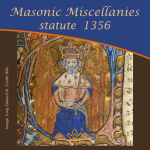 Masonic Miscellanies - statute 1356 Further to the reference in the article – The Builders - 6 - Free-Masons 'a statute was enacted against the Free-masons in 1356' – Regulations for masons who are hewers, on the one hand, and the light masons and setters on the other. |
 Masonic Miscellanies - An Anti-Masonic 'Apron'? The Anti-Masonic 'Apron' was created during the 1832 Presidential election in USA. It was not Ani-masonic. And it was not an apron. Read on to find out what and why it was created. |
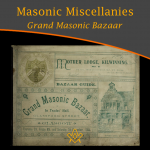 Masonic Miscellanies - Grand Masonic Bazaar (1895) Grand Masonic Bazaar (1895); to raise funds to clear the debt incurred by “Mother Kilwinning” in rebuilding their Lodge. |
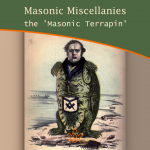 Masonic Miscellanies - the 'Masonic Terrapin' A satirical book from 1851 includes a bizarre caricature of a 'Masonic Terrapin' - all I can say is 'read on'… |
 Masonic Miscellanies - Masonic Bookplates You probably know what a bookplate is for, but did you know that the earliest known book mark/label dates from the reign of Amenhotep III in Egypt around 1391−1353 BCE?! |
 Masonic Miscellanies - Freemasonry & Bees Freemasonry & Bees - what's the buzz? The bee was among the Egyptians the symbol of an obedient people, because, says Horapollo, of all insects, the bee alone had a king. |
 Masonic Miscellanies - The mystery of the Tattooed Freemason In 1894, the body of a drowned man was found in the Bay of San Francisco - what they discovered was amazing. |
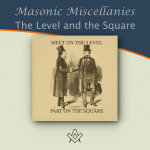 Masonic Miscellanies - The Level and the Square (A Poem) The Level and the Square (A Poem) - "We meet upon the Level, and we part upon the Square – |
 Masonic Miscellanies - The Mystic Tie What is the 'Mystic Tie'? Clue: it's not an item of neckwear! |
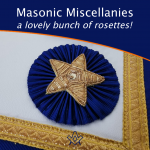 Masonic Miscellanies - A lovely bunch of rosettes! Where did the origin of the use of rosettes on Masonic aprons come from ? |
 Masonic Miscellanies - The Lodge of Sorrow The Lodge of Sorrow - Extracted General Ahiman Rezon, by Daniel Sickles, [1868] |
 Masonic Miscellanies - Memento Mori Memento Mori - a Masonic reminder to make your mark on the world |
 Masonic Miscellanies - A closer look at the Level and the Plumb-rule A closer look at the Level and the Plumb-rule |
 Masonic Miscellanies - The Symbolism of the Gloves The Symbolism of the Gloves and why Freemasons wear white gloves |
 Masonic Miscellanies - Will the real James Anderson please stand up? Will the real James Anderson please stand up? |
 Masonic Miscellanies - The Legend of the Third Degree The most important and significant of the legendary symbols of Freemasonry is, undoubtedly, that which relates to the fate of Hiram Abif. |
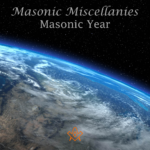 Masonic Miscellanies - Masonic Calendar Why do Freemasons use different 'years' to our regular calendar? |
 Masonic Miscellanies - What is a 'Lewis'? The English word 'Lewis' is a term belonging to operative Masonry, and signifies an iron cramp, which is inserted in a cavity prepared for the purpose in a large stone. |
 Masonic Miscellanies - From J.S.M. Ward Ever wondered why masons had to be 'free' or why we have a Tyler? |
masonic knowledge
to be a better citizen of the world
share the square with two brothers

click image to open email app on mobile device


